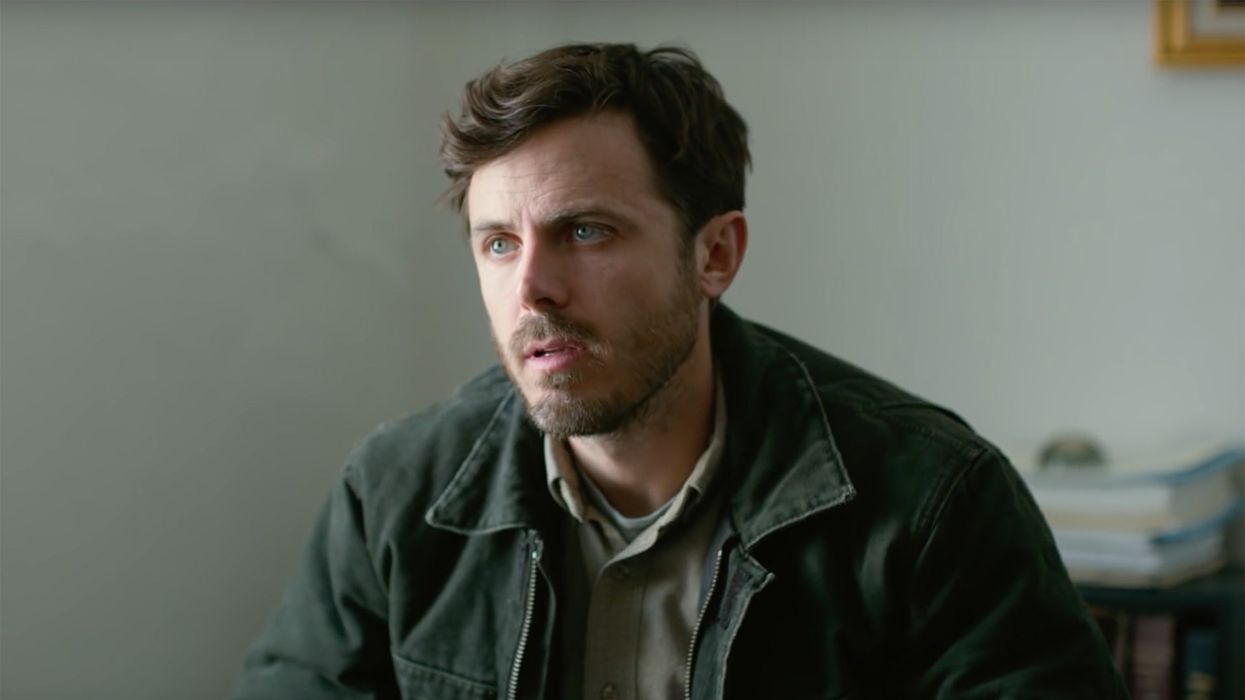In 'Manchester by the Sea,' Waves of Grief Punctuate the Year's Most Tragic Performances
Kenneth Lonergan's Manchester by the Sea weaves past and present into a moving tapestry of grief—with Oscar-worthy acting.

Few films successfully evoke the essence of grief—that gnawing, pit-in-your-stomach, engulfing hollowness from which you emerge dazed, unable to process an utterly and inconceivably changed reality. Kenneth Lonergan's Manchester by the Sea, Casey Affleck, in what is sure to be an Oscar-worthy role, plays Lee Chandler, a reticent handyman barely scraping by in a blue-collar Boston suburb. His gruff demeanor and solitary existence betray an inner struggle far too oppressive to readily surface. When he's summoned back to his New England hometown after news of his brother's death, Lee has no choice but to reenter his former life—and with it, the memory of an unimaginable trauma.
Lonergan reveals that tragedy by employing a sophisticated narrative structure which redefines the cinematic flashback. Trading the convention-stilted incarnations of past events placed at obvious junctures for a more patient and enriching approach, Lonergan rolls out the flashbacks at unexpected intervals. Sometimes, it's difficult to discern whether scenes are happening in the past or the present. But like any good director, Lonergan trusts that a bigger picture and deeper sense of understanding will coalesce for the audience as a result.
"I had to say very little directorially to them. They showed up—we did a number of takes, we had two cameras—and they did it."
At a press conference for Manchester by the Sea at the Film Society of Lincoln Center, Lonergan admitted this unusual approach to the narrative was the result of a failed first draft.
"I came to the flashback structure on the second pass of the script," Lonergan said. "The first was written chronologically and I thought it was boring, so I started over again at the point which I found interesting, which was his daily chores at the apartment complex [the film's beginning]. But I had all this material written and I knew what had happened, more or less. I just tried to drop it in. Right away it felt like a much more robust way to tell the story."

In perhaps one of the most heartbreaking scenes in recent memory, Lee and his ex-wife (Michelle Williams) encounter one another for the first time in years. Words fail them as they grasp to discuss what unfolded in the wake of the tragedy. Though they are the only two people in the world who have experienced the same life-shattering heartbreak, they can't communicate. They can't share the pain.
Lonergan can grasp the emotional enormity of the scene just as well as the audience, for whom it lingers in mind for days.
"I can appreciate [the scene] as much as anyone else without being immodest because their acting is so good, so full," said Lonergan. "It was a pleasure and painful to watch."
"It was one of the most satisfying and interesting experiences I've ever had collaborating with an actor."
He rehearsed the scene with the actors prior to production, paying careful attention to the characters' dynamics and motivations. As a result, "[Affleck and Williams] were both very ready to do the scene when we came to shoot it," Lonergan said. "I had to say very little directorially to them. They showed up—we did a number of takes, we had two cameras—and they did it."
Affleck, who has a reputation for being a devoted perfectionist with his craft, sometimes asked for a few more takes. "But that's just what he's like," said Lonergan. "[Affleck and Williams] ask a lot of questions. They really want to know what my perspective is before they start to enhance it and make it real for themselves. I said that I think they're both trying so hard to be nice to each other. She's desperate to reestablish some sort of connection, but she doesn't want to hurt him even more by doing that. He doesn't want to make her feel bad for asking. They keep bumping over each other to try to take care of each other."

Manchester by the Sea is made of small moments of great sorrow. Lonergan places an emphasis on specificity, which brings his characters and their world alive. The unrecognizable actors in the film, including the extras, were either locals or cast from the theater community in Boston.
Even the objects in the film's world take on a significance of their own. In one crucial scene, two EMS workers fail to load a stretcher into an ambulance; it keeps collapsing, as if mocking the fragility of human dignity. "It's an awful, not-soap-opera moment," Lonergan said of the scene. "They're really suffering. I think there's something interesting that happens with physical objects when the world is not lining up for you." This specificity also lends itself to idiosyncratic humor peppered throughout the film, despite its heavy overtones. Lonergan finds comedy in absurd moments of conversation: a sudden outburst of passion, an off-color remark, a combative tête–à–tête laced with futility.
Though it's hard to imagine anyone embodying Lee better than Affleck, Matt Damon was originally tapped to star in and direct the film. Due to schedule complications, Lonergan decided to direct, and cast Affleck to replace Damon. "It was one of the most satisfying and interesting experiences I've ever had collaborating with an actor," Lonergan said. "He wants to know everything he can possibly know, to explore every direction available. He has a somewhat obsessive and prosaic drive to understand what's happening. He's not picking the script apart; he's asking me how I see it and what we're trying to get at, how can we be real in that moment. He makes you think about what you wrote and what you see is the reality of the story."













